Much has been written about the charming Karoo village of Prince Albert, but there is more to this town than pretty houses, quaint eateries and arty shops. Here are some Prince Albert facts that you may not have heard.

1. Gay’s Dairy was the original farm
The original farm, which founded Prince Albert, was called “De Queekvallei” and was given to Zacharius de Beer in 1762. This farm is now home to Gay’s Dairy and you can buy various dairy products from them. De Queekvallei was painted by Robert Gordon in 1778 and his original paintings can be found in The Rijksmuseum in Amsterdam. There is a bench on Gordon’s Hill in his honour which is the perfect spot for an aerial view of the town, although now a little different from what Robert saw.
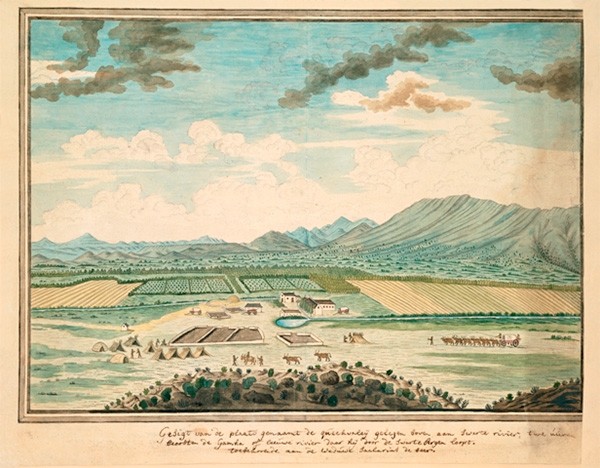
2. The lei water system
The town still uses the a lei water system, using water channelled from the mountains. As you may have to remember which day to put out your trash, the people with water rights in Prince Albert have a set day and time in which they can direct the canal water to their home. Back in the day this used to be controlled by a Water Controller, but now operates under an honesty system. However, there are occasions where not everyone is so honest and fights sometimes break out over water use.
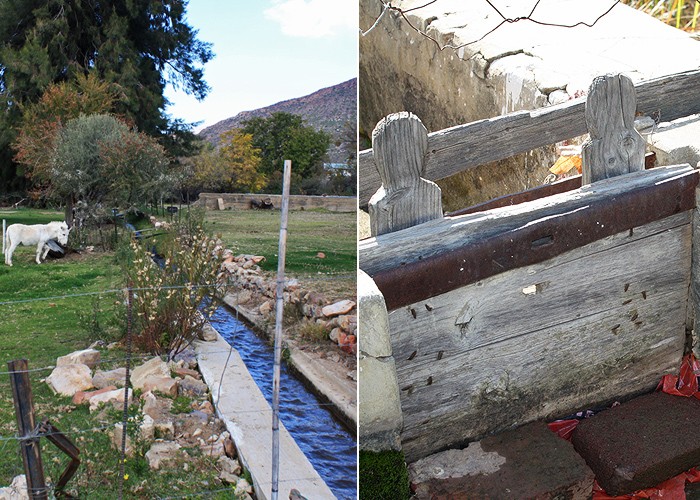
3. Watermills
There used to be five watermills in the district, but only one remains in working order. It was built in 1850 and operated until 1972.
4. The Prince Albert Gable
Many of the buildings in Prince Albert have the town’s unique gable, known as the Prince Albert Gable. These gables date from 1840 to 1860 and were mostly built by Carel Lotz who came from Tulbagh.
5. The Dutch Reformed Church
The Dutch Reformed Church was completed in 1865 with the bell and clock, both imported from London, installed in 1878. During the Boer War the British forces used the church tower as a look-out. The corners of the wall surrounding the church and the spikes on the fence have been designed to match the church building.
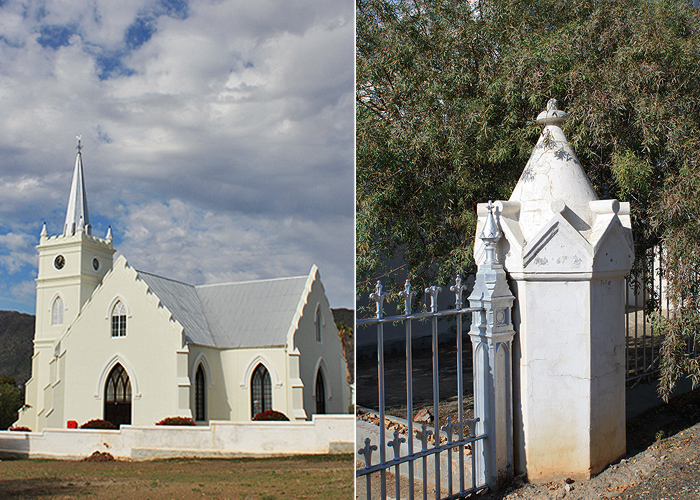
6. Prince Albert had the country’s first multi-racial rugby team
Prince Albert was the first town in South Africa to have a multi-racial rugby team in 1984. The Fransie Pienaar Museum has a collection of rugby photographs, which will prove fascinating for rugby fans. Many visitors have spotted one of their distant relatives in them!
7. Distilling witblitz at The Fransie Pienaar Museum
The Fransie Pienaar Museum was originally the home of the owner of the Swartberg Hotel in 1906 and then a hospital from 1954 to 1978 before it became a museum. To help raise funds, the museum distills their own witblitz in the back yard which is available for purchase. Talk about supporting a good cause!

8. Gold mines
Gold was discovered in Prince Albert in 1870. A second find in 1891 started a gold rush that saw approximately 500 people rushing to stake their claim when the clock struck midnight on the 4th of August 1891.
9. 100-year old vine at the Swartberg Hotel
The Swartberg Hotel has a vine in the garden at the back that is said to be over 100 years old.
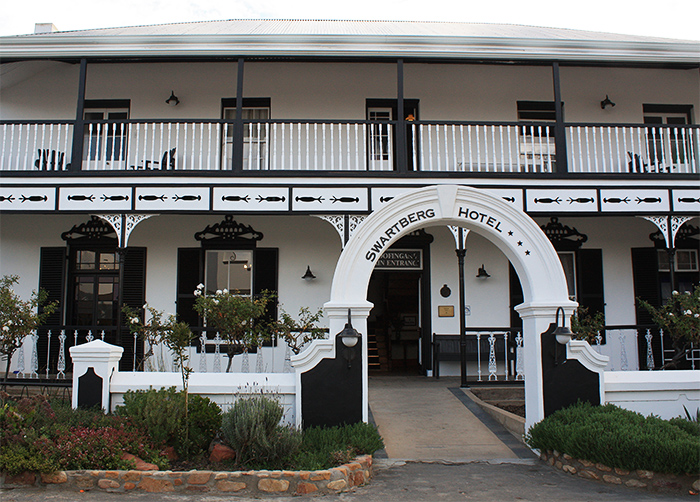
10. Forced removals of communities
The coloured communities of Rooikamp, Nuwerus, Die Bos and Albertsplaas that once existed in Prince Albert are no longer, as the Group Areas Act forced the residents of these communities to move to North-End township in 1962. In many cases, the houses they lovingly built were demolished in front of their eyes, along with their possessions. Livestock were also removed. Whilst land claims have now been submitted and restitution payments are ongoing, it’s a sad story and one depicted very well by artist Christine Thomas, whose paintings in her “Die Verlede en Hede” collection can be seen at the Fransie Pienaar Museum. Guided tours of the remnants of the of Rooikamp and Nuwerus neighbourhoods can also be arranged at the museum.
11. The doll-maker
Among the many artists who have taken up residence in the town is a rather unique doll-maker who takes her inspiration from the Karoo and the people she meets here. Brita Nathan makes dolls to order using local fabrics, including Karoo sheep’s wool for hair. It can take up to two days to make a doll and no two dolls are ever the same. You can find her dolls in The Lazy Lizard and Karoo Looms along Kerk Street, or contact her directly on tel 072 744 4037 or email [email protected].

12. First movies at Jans Rautenbach Schouwburg
The Jans Rautenbach Schouwburg was originally the outhouse for the home belonging to the parents of artist Gawie Beukes in the late 1800s. The first movies in Prince Albert were shown here and, being silent movies, Gawie used to provide the piano accompaniment. Movies are still shown there today, although no piano playing is needed.
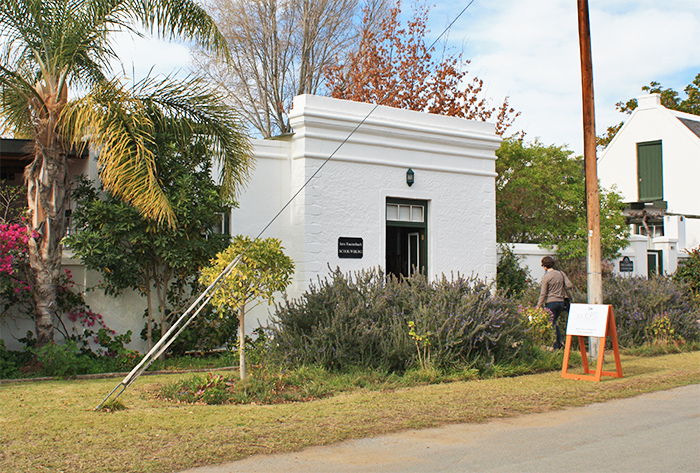
13. Indie Karoo Film Festival
Talking of movies, Prince Albert played host to the Indie Karoo Film Festival for the first time over the first weekend of July 2015, showing movies, short films and documentaries by independent South African film-makers. The films were shown over three days in three different venues: The Showroom, the Jans Rautenbach Schouwburg and in a tent at La Di Dah farmstall. The Sunshine Cinema at La Di Dah farmstall harnessed the power of the Karoo sunshine and used solar power to show their movies. The Indie Karoo Film Festival will become an annual event and is a great opportunity to see some interesting films, scoff popcorn for breakfast and explore the town.
14. The Showroom Theatre
The Showroom Theatre, housed in a beautiful art-deco building, was originally a car showroom. No longer showing cars, it now shows art movies and hosts performing artists in a plush theatre, complete with avant-garde red seats and carpeting and is well-worth a visit if you’re in town.
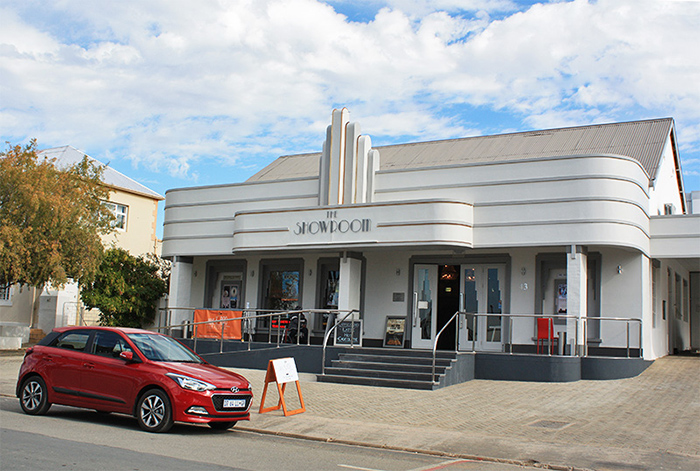
15. J M Coetzee
South African author, JM Coetzee, spent some of his childhood years staying with his grandparents in Prince Albert and his memoirs of his youth feature stories about growing up in the town.
16. Graveyard with no headstones
The graveyard in Bank Street is the oldest one in Prince Albert. Although the church has a record of who is buried there, there are no headstones on most of the graves – they were crafted from wood and have perished over time.

17. Ghosts about town
On the subject of graveyards, Prince Albert could well be one of the most haunted towns in the Karoo! There are over 10 ghosts in the village, including poker-playing ghosts in hotel rooms, ghosts who bake bread, a ghost who doesn’t like you to photograph his house and a ghostly hearse seen on misty nights. There’s also a ghost on the Swartberg Pass, although not many people drive that pass at night. If you’re as intrigued as I was, take a ghost tour with Ailsa, the local Story Weaver.
18. The house that was a post office
The beautifully painted red house on the corner of Mark and Bank Streets is that colour for a reason. The building used to be the town’s post office and the current owners painted it red because of this. Look out for their interesting postbox as you pass by.

19. Hand-painted dustbins
Nearly all the dustbins in Prince Albert are hand-painted with information about the town, the area, or the history of the building they are placed in front of. There are approximately 107 painted dustbins in total. Now if only all towns would go to that effort with their bins!
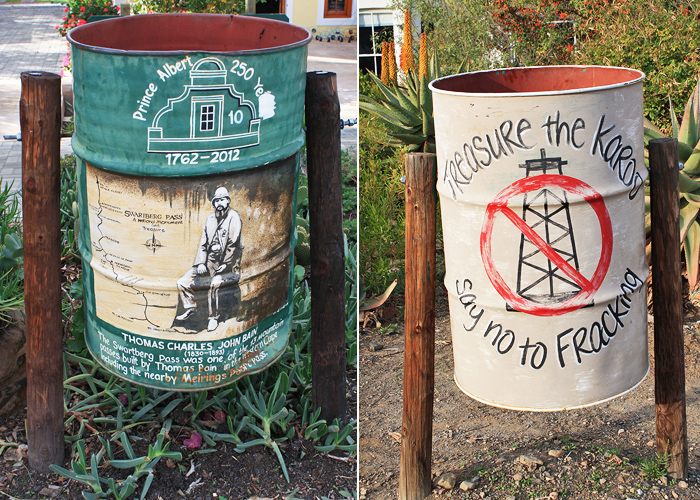
20. No mosquitoes at Bushman Valley
If you detest mosquitoes, then stay at Bushman Valley, just 5km outside the town. Not only are you surrounded by beautiful mountains in budget-friendly accommodation (from R80 per person a night for camping, R250 per person a night for chalets), there are no mosquitoes in summer because of the breeze that gently drifts through there.


















